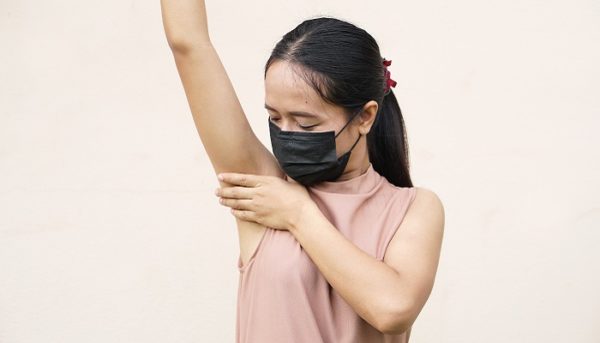Ever felt a lump around your armpit? If yes, you not need to panic. Not all armpit lumps are dangerous or indicate breast cancer. Hence, it’s essential to consult a doctor for further examination. You can also observe its shape, size, consistency, and mobility before consulting with a doctor to give more thorough information.
Contents
Causes of Armpit Lump
Lumps can actually occur anywhere in your body, from arms, legs, to armpits and breasts. Moreover, the majority of these lumps are benign and harmless.
However, if you notice a lump enlarging within a specific period; accompanied by pain, redness, and warmth; or if the lump feels hard and immovable, then you should be cautious and promptly consult a surgeon.
Armpit lumps are one type of lump commonly found in both women and men. Generally, armpit lumps can be caused by several factors such as:
- Enlargement of lymph nodes usually occurs as the body’s response to infection. Some examples of infections that can cause lymph node enlargement are sore throat or pharyngitis, inflammation of the tonsils or tonsillitis, ear infections, lung infections due to tuberculosis, etc. However, in extreme conditions, lymph node enlargement can also be found in cancer diseases.
- Fibroadenoma
- Bacterial, viral, or fungal infections
- Cancers such as breast cancer, lymphoma, leukemia
- Lipoma
- Skin infections such as hidradenitis suppurativa, abscess
- Allergic reactions due to deodorant use
Examination of Armpit Lump
If you feel a lump in the armpit area, immediately perform a SADARI examination or self-breast examination. Here are the steps:
- Stand upright in front of a mirror bare-chested. Observe for any lumps, changes in shape, or differences in size between the two breasts (usually, the size of the right and left breasts may differ slightly).
- Raise both arms upwards, join the palms behind your head as if you’re about to do a sit-up, and bend your elbows forward. Again, observe the shape and anatomy of your breasts.
- Next, place both hands on your hips. Bring both elbows forward, so your shoulders rise, and your breasts hang. Make sure the chest muscles contract, then observe your breasts.
- Lift your left arm upwards, bend your elbow until your palm touches the top of your back. With the fingertips of your right hand, gently palpate and press the left breast area. Check if there are any lumps. Check all the way to the left armpit.
- Perform gentle massages with upward-downward movements, circular motions, or straight movements from the edge of the breast towards the nipple, and vice versa. Repeat on the right breast.
- After that, try gently pinching the nipples. Observe if there’s any unusual discharge.
- In a lying position, lift your left arm so that the armpit is exposed. Place a small pillow under your right shoulder. Palpate the breast as mentioned earlier. Palpate from the center to the armpit, and repeat for the right breast.
It’s best to perform SADARI 7-10 days after menstruation. It will be easier if you do it while bathing because the soap will help you palpate the breasts.
If you find a lump in your armpit, immediately consult your surgeon for further treatment.
Diagnosis
During the initial consultation, the doctor usually conducts an interview and a simple physical examination to find the possible causes of your lump. A lump is considered abnormal if there’s a history of its size increasing in recent times, it feels hard, has irregular shape, and is difficult to move, or if it’s accompanied by signs of infection such as redness, pain, and warmth.
If physical examination results like these are found, the doctor may suggest you undergo several tests such as:
- Routine blood tests, to see signs of infection such as an increase in white blood cells or leukocytosis
- Allergy tests are used to see if there’s an allergic reaction to certain substances such as deodorant, etc.
- Ultrasound is used to assess the shape, size, and surface of the lump
- MRI or CT-Scan is used to get clearer imaging of the lump
- Chest X-ray is used to see if there are signs of infection in the lungs, or signs of spread/metastasis from cancer
- Mammography is used to assess the presence of palpable lumps, as part of breast cancer screening and diagnosis
- Biopsy is the gold standard examination for any type of cancer, performed to see the appearance of cancer cells in the lump tissue taken
Doctors Who Can Handle Armpit Lump
To check this condition, you can consult our general or oncology surgeon:
Mandaya Royal Puri Hospital has a breast cancer center equipped with newest technology and experienced specialist. Don’t hesitate to schedule an appointment with our doctor via WhatsApp Chat, the Book Appointment page, or the Care Dokter app, which can be downloaded from Google Play and the App Store. In addition to appointments, you can also monitor your queue number and get other complete information there.
References:
De Andrade JM, Marana HRC, Filho JMS, Murta EFC, Velludo MAS, Bighetti S. (1996). Differential Diagnosis of Axillary Masses. Tumori (82):569-99.
Mayo Clinic. Swollen lymph nodes. (Online). Available from: https://www.mayoclinic.org/. (Updated October, 2021; Cited December, 2021).
NHS. Swollen Glands. (Online). Available from: https://www.nhs.uk/. (Updated September, 2020; Cited December, 2021).
NHS. Lumps. (Online). Available from: https://www.nhs.uk/. (Updated January, 2021; Cited December, 2021).


